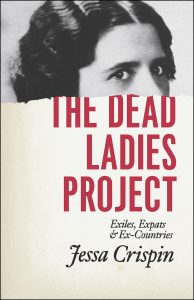The Dead Ladies Art of Memoir Writing

From “Live through This,” by Catherine Hollis, her recent essay at Public Books on how much of our own lives we construct when we read and write memoirs:
In The Dead Ladies Project: Exiles, Expats, and Ex-Countries, Jessa Crispin, the scrappy founding editor of Bookslut and Spolia, finds herself at an impasse when a suicide threat brings the Chicago police to her apartment. She needs a reason to live, and turns to the dead for help. “The writers and artists and composers who kept me company in the late hours of the night: I needed to know how they did it.” How did they stay alive? She decides to go visit them—her “dead ladies”—in Europe, and leave the husk of her old life behind. Crispin’s list includes men and women, exiles and expatriates, each of whom is paired with a European city. Her first port of call is Berlin, and William James. Rather than explicitly narrating her own struggle, Crispin focuses on James’s depressive crisis in Berlin, where as a young man he learned how to disentangle his thoughts and desires from his father’s. Out of James’s own decision to live—“my first act of free will shall be to believe in free will”—the rest of his life takes shape. Crispin reconstructs what it might have felt like to be William James before he was William James, professor at Harvard and author of The Varieties of Religious Experience. If he can live through the uncertainty of a life-in-progress, so too might she.
But not before checking in with Nora Barnacle in Trieste, Rebecca West in Sarajevo, Margaret Anderson in the south of France, W. Somerset Maugham in St. Petersburg, Jean Rhys in London, and the miraculous and amazing surrealist photographer Claude Cahun on Jersey Island. Through each biographical anecdote, each place, Crispin analyzes some issue at work in her own life: wives and mistresses, revolutionaries with messy love lives, and the problem of carting around a suicidal brain. Crispin travels with one suitcase, but a good deal of emotional baggage. While she focuses on each subject’s pain, what she’s seeking is how these writers and artists alchemized their suffering into art, and how that transmutation opens up an individual’s story to others. . . .
In the end, learning how other women and men decided to live helps Crispin decide that suicide is a failure of imagination. “Here is something else you could do,” Crispin’s ladies tell her; here is some other way to live.
To read the piece in full at Public Books, click here.
To read more about The Dead Ladies Project, click here.